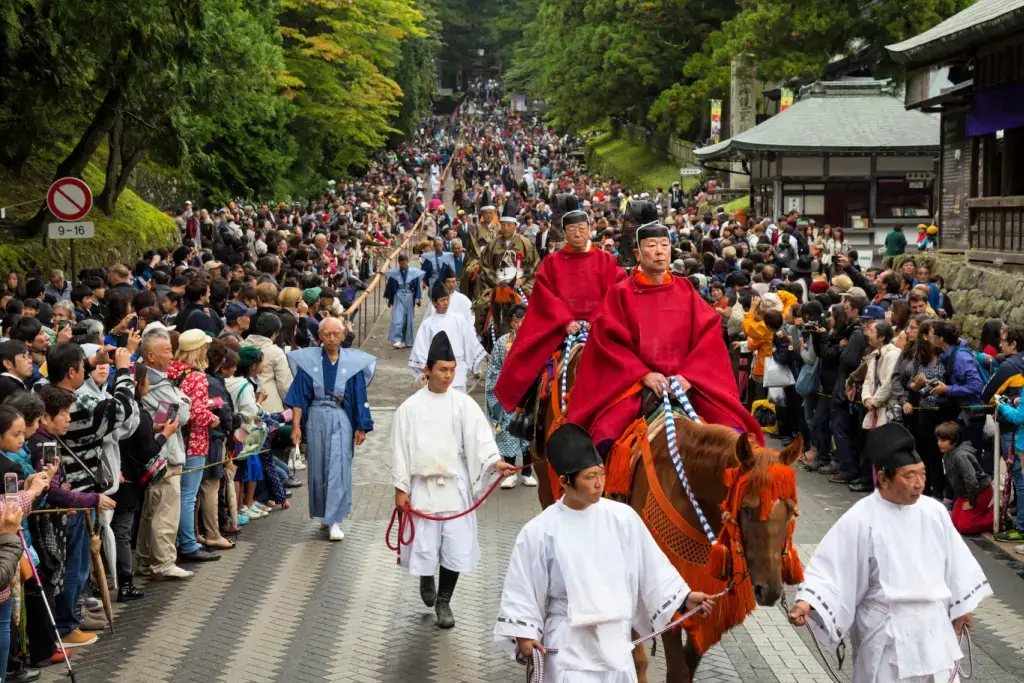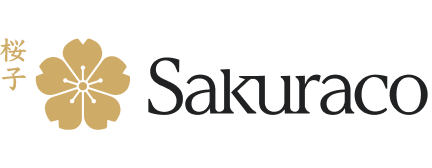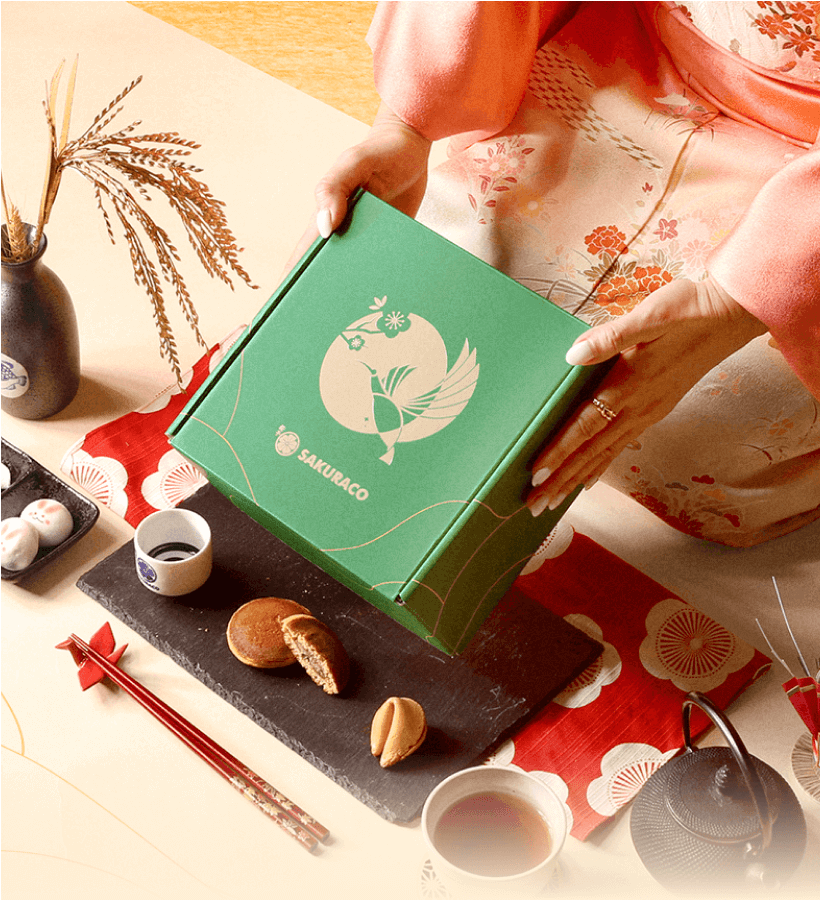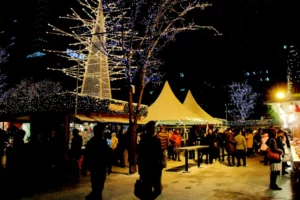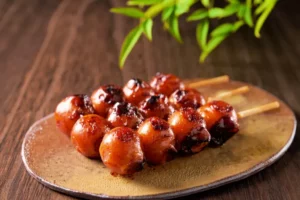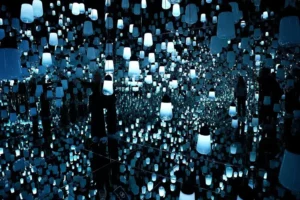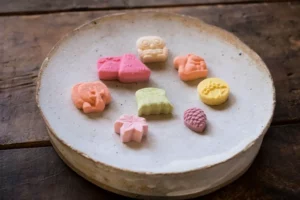Every year in Nikko, the spirit of the samurai comes alive. The 1,000 Samurai Procession, or “Hyakumonozoroe Sennin Gyoretsu,” takes visitors back to the Edo period. Hundreds of warriors in full armor march through the streets, reviving a tradition over 400 years old. History fans, festival lovers, and anyone seeking an unforgettable experience will find this fall event in scenic Nikko a must-see.
Table of Contents
ToggleHonoring a shogun: the origins of the samurai parade
The 1,000 Samurai March is part of Nikko’s Toshogu Shrine Grand Spring and Autumn Festivals, held every May and October. These celebrations honor Tokugawa Ieyasu, the founder of the Tokugawa shogunate. They trace back to the story of his spirit’s journey to its final resting place at Nikko’s Toshogu Shrine.
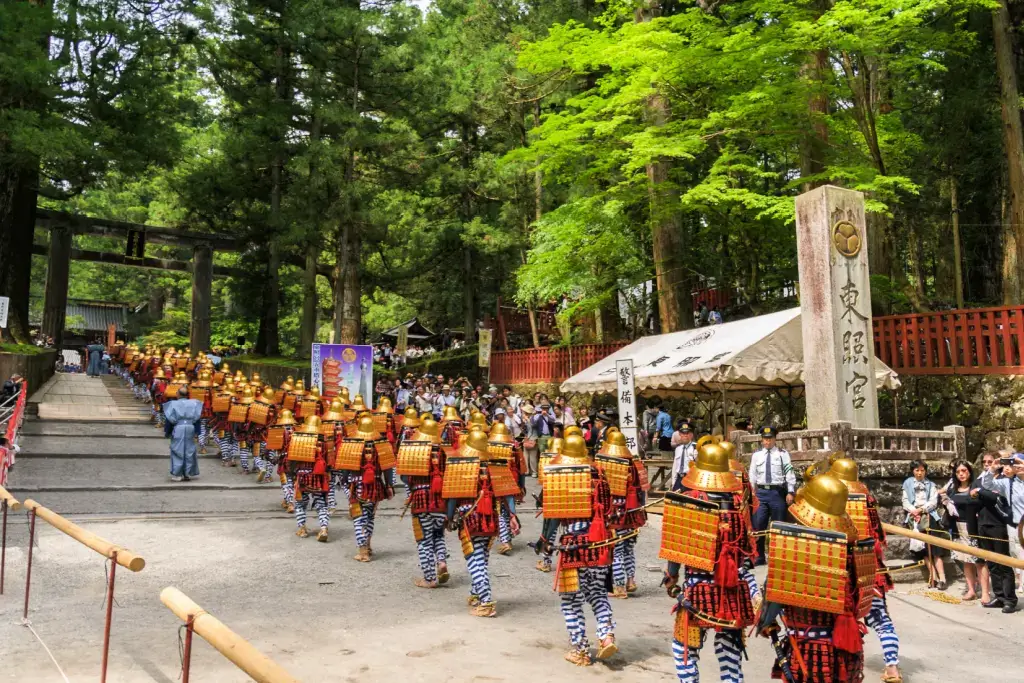
In 1616, after his death, his remains were carried from Mt. Kunousan in Shizuoka to Nikko. A grand escort of samurai guarded the procession and showed the shogunate’s power. Today, that commanding sight is recreated for everyone to witness.
A living history lesson on parade
On the day of the procession, about a thousand participants dress in armor, helmets, and traditional weapons. Every detail reflects samurai attire from centuries ago. Each year, more than 1,200 people join the march. They create a striking flow of color and pageantry through Nikko’s historic streets and shrine grounds.
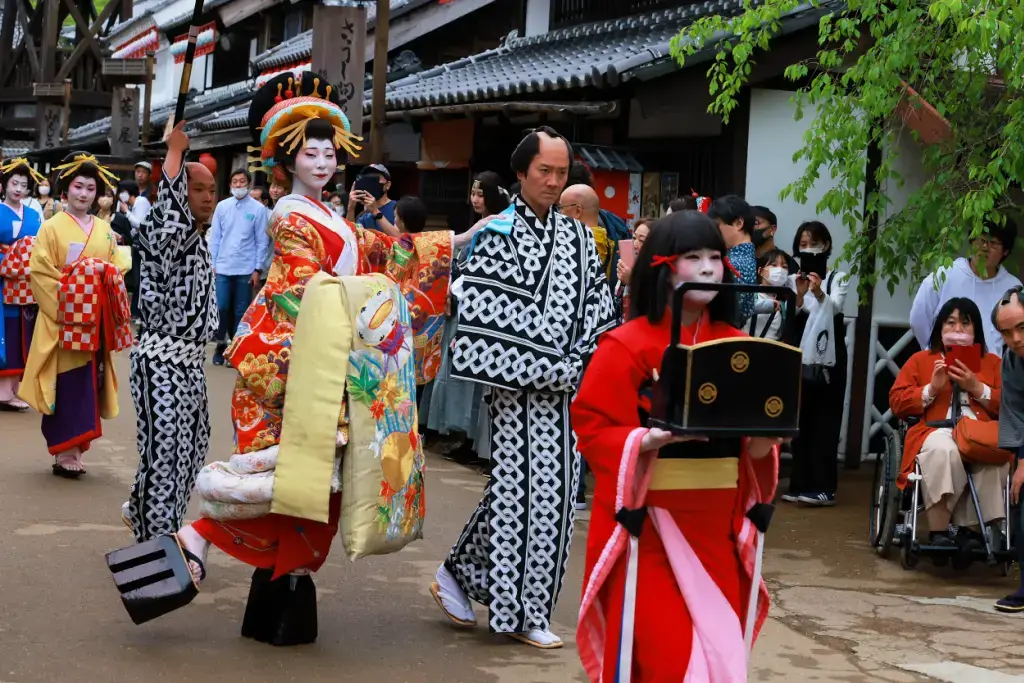
The parade is divided into groups, including sacred horses and flag bearers. The highlight is three grand mikoshi (portable shrines) carried along the route. Everyone advances with precise, solemn dignity, echoing the original procession that escorted Ieyasu’s spirit to its majestic mausoleum. It’s not just a show; each moment carries deep religious and historical meaning that locals take immense pride in preserving.
Samurai sights and festival highlights
Before the samurai parade begins, the festival hosts rituals and performances at Toshogu Shrine. A highlight is yabusame, the art of horseback archery. Archers in samurai attire show skill and precision as they fire arrows at their targets. The whistle of arrows and the crowd’s cheers heighten the spectacle’s excitement.
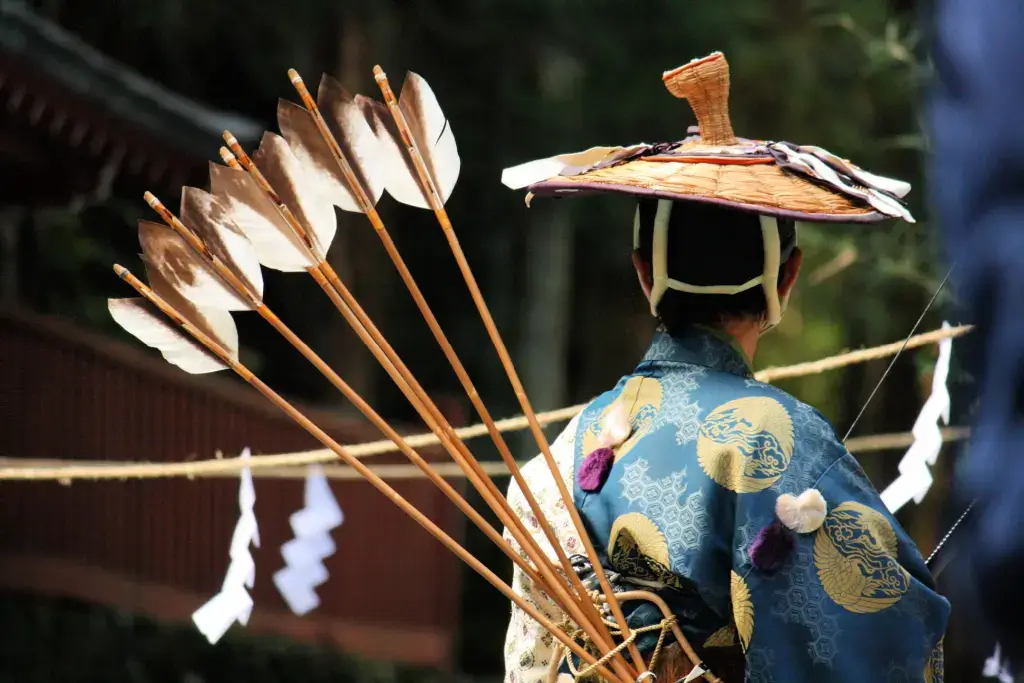
As the 1,000 samurai march, they pass Nikko Toshogu Shrine, a UNESCO World Heritage Site. Its ornate gates, gold leaf, and detailed carvings make it a striking setting. Around the shrine, Nikko’s forests and autumn leaves add natural beauty. The dramatic backdrop turns the event into a paradise for photographers and sightseers.
How is this samurai different from the average festival?
Unlike some Japanese festivals known for music, food stalls, and party vibes, the samurai procession is a dignified, solemn, and powerful reenactment. It offers visitors the rare chance to witness a living tableau of Japanese warrior culture, undiluted by modern distractions. For travelers, it’s a true window into the Japanese soul, full of respect for heritage, community, and artistry.
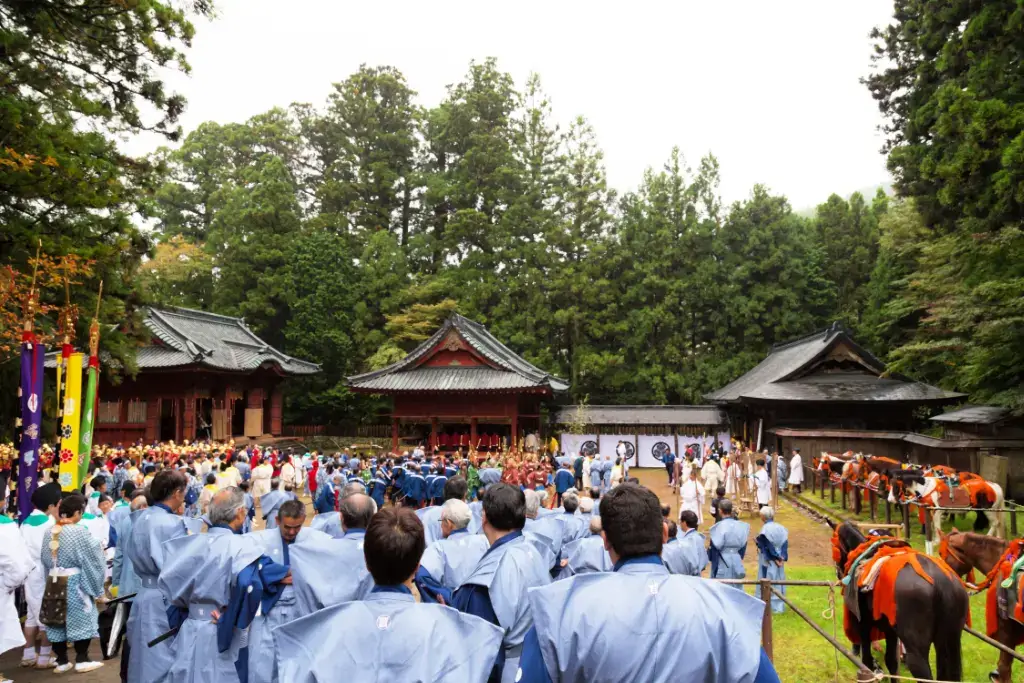
During the festival, you can explore other treasures within the Toshogu Shrine complex. Highlights include the famous Yomeimon Gate (known as the “Gate of the Setting Sun” because people can admire it all day), and the wood carving of the Sleeping Cat, both national treasures.
Are you looking for great snacks from Nikko? Check out Sakuraco! Sakuraco delivers traditional Japanese snacks, teas, and sweets from local Japanese makers directly to your door so you can enjoy the latest treats from Japan!
When and where to go for this festival
The 1,000 Samurai Procession is held twice a year, during the Grand Spring Festival (usually May 17–18) and the Grand Autumn Festival (October 16–17). Processions begin in the late morning and continue through the early afternoon. The event’s main route winds from the shrine to the Otabisho (resting place for the portable shrines) and back, a walkable distance perfect for joining the local crowd.
While the event is free to watch, arriving early guarantees a good view. These festivals attract visitors from all over Japan and beyond. The area can get crowded, so bring water and comfortable shoes, and be prepared for chilly mountain air in autumn.
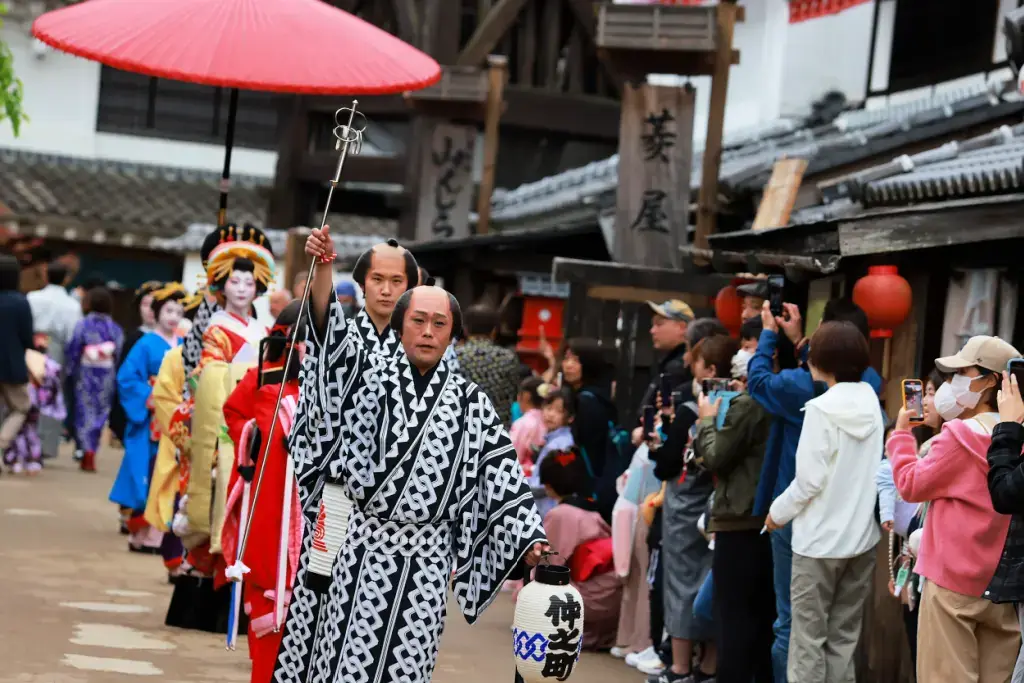
Does Nikko have other things to see?
While the samurai procession is the star, Nikko is a treasure. Don’t miss famous sites like the Shinkyo Bridge, Nikko’s stunning vermilion wooden bridge at the entrance to its shrines, or take a stroll to enjoy the area’s fall colors. Nearby, you’ll find peaceful temples, waterfalls, and the glow of golden leaves across the hills.
Why experience the 1,000 Samurai March?
Nikko’s samurai parade is more than a festival; it’s a full-scale, immersive journey into Japan’s past. It unites local pride, world-class pageantry, and the moving legacy of enduring tradition. For anyone interested in samurai, history, or Japanese culture, it’s a once-in-a-lifetime opportunity to witness the march of a thousand warriors echoing through time.
If you find yourself near Nikko during festival season, join the crowd, feel the stir of history, and watch as the spirit of the samurai comes alive! Have you been to this festival or do you plan to go? Let us know in the comments below!


